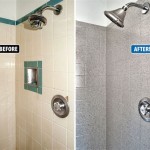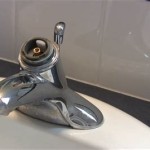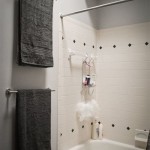Custom Bathroom Vanity Cost: A Comprehensive Guide
A bathroom vanity is a cornerstone of bathroom design, offering both functional storage and aesthetic appeal. While prefabricated vanities provide a convenient option, custom-built vanities allow for personalized dimensions, tailored storage solutions, and unique design elements that perfectly complement a bathroom’s overall theme. Understanding the cost implications of a custom bathroom vanity is crucial for budget planning and ensuring the final product aligns with expectations.
Estimating the cost of a custom bathroom vanity involves several factors, making it difficult to provide a single, universally applicable figure. The price range can vary significantly based on the size, materials used, complexity of design, hardware chosen, and labor costs in the specific geographic location. This guide provides a detailed breakdown of the elements influencing the cost of a custom bathroom vanity, empowering homeowners to make informed decisions.
Materials: The Foundation of Vanity Cost
The selection of materials exerts a substantial influence on the overall cost of a custom bathroom vanity. Wood is a popular choice, offering both versatility and aesthetic appeal. Different wood species vary considerably in price. Softwoods like pine are generally more affordable, while hardwoods such as oak, maple, cherry, and walnut command higher prices due to their durability, grain patterns, and resistance to moisture.
The type of wood also impacts cost. Solid wood is the most expensive option, offering the highest level of durability and aesthetic appeal. Wood veneers, consisting of a thin layer of real wood applied to a less expensive substrate like plywood or particleboard, offer a more cost-effective alternative while still providing the look of real wood. Laminates, which are synthetic surfaces applied to a core material, provide a budget-friendly option, offering durability and water resistance in a wide range of colors and patterns.
Beyond the cabinet material, the countertop surface plays a significant role in the budget. Popular countertop materials include granite, quartz, marble, solid surface, and laminate. Granite and quartz are highly durable and offer a luxurious aesthetic, but they come with a higher price tag. Marble, while elegant, requires more maintenance due to its porous nature and susceptibility to staining. Solid surface materials like Corian are non-porous, easy to clean, and offer a seamless look, but they may not have the same natural appeal as stone. Laminate countertops are the most affordable option, offering a wide range of colors and patterns, but they are less durable than other materials.
The choice of hardware, including knobs, pulls, hinges, and drawer slides, also contributes to the overall cost. High-end hardware made from solid brass or stainless steel can add a significant expense compared to standard options made from less expensive metals or plastic. The quality and functionality of drawer slides, such as soft-close mechanisms, can also impact the price.
Design Complexity and Customization: Shaping the Price
The complexity of the vanity design directly affects the amount of labor and materials required, influencing the overall cost. A simple, rectangular vanity with basic drawers and cabinets will be less expensive than a vanity with intricate carvings, custom moulding, or unique architectural features.
The level of customization also plays a crucial role. A vanity built to standard dimensions will be less expensive than one designed to fit a specific space with unusual angles or limited clearance. Custom features, such as integrated sinks, pull-out shelves, or specialized storage compartments, will add to the cost due to the increased design and fabrication time involved.
The size of the vanity is a significant factor. A larger vanity requires more materials and more labor to build, resulting in a higher price. Double vanities, which provide two sinks and ample storage space, are generally more expensive than single vanities. The number of drawers, cabinets, and shelves also contributes to the overall cost. More complex storage solutions necessitate additional hardware and fabrication time, increasing the price.
The finish applied to the vanity also impacts the cost. A simple painted finish is generally less expensive than a stained finish, which requires more preparation and application time. Specialized finishes, such as distressed finishes or multi-step finishes, can add to the cost due to the labor involved.
Labor Costs: The Human Element
Labor costs represent a significant portion of the overall cost of a custom bathroom vanity. These costs encompass the time and expertise of the designer, carpenter, and installer. The hourly rates for these professionals can vary depending on their experience, skill level, and geographic location.
The design phase involves consultation, space planning, and creating detailed drawings or renderings of the vanity. Designers may charge an hourly rate or a fixed fee for their services. The complexity of the design and the number of revisions required can influence the design costs.
The fabrication process involves cutting, shaping, assembling, and finishing the vanity. Skilled carpenters with experience in building custom cabinetry charge higher hourly rates. The complexity of the design and the materials used can influence the amount of time required for fabrication. More intricate designs and the use of hardwoods necessitate more specialized skills and longer fabrication times.
The installation process involves removing the existing vanity, preparing the space, and installing the new vanity. Plumbers may be required to disconnect and reconnect the plumbing fixtures. Electricians may be needed to handle any electrical work related to lighting or outlets. Installation costs can vary depending on the complexity of the installation and the need for plumbing or electrical work. Factors such as the condition of the existing plumbing and the accessibility of the space can also impact installation costs.
Geographic location significantly impacts labor costs. Areas with a higher cost of living generally have higher labor rates. Urban areas tend to have higher labor costs compared to rural areas. The availability of skilled tradespeople in a particular area can also influence labor rates. Areas with a high demand for carpenters and installers may experience higher labor costs due to limited supply.
Additional costs to consider include permits, disposal fees for the old vanity, and delivery charges for the new vanity. Permits may be required for plumbing or electrical work. Disposal fees can vary depending on the size and weight of the old vanity. Delivery charges can depend on the distance from the fabrication shop to the installation site.
To mitigate costs, homeowners can consider several strategies. Obtaining multiple quotes from different contractors allows for comparison shopping and negotiation. Simplifying the design and selecting more affordable materials can significantly reduce the overall cost. Consider handling some aspects of the project, such as demolition or painting, to save on labor costs. However, it is crucial to ensure that any DIY efforts are within one's skill level to avoid costly mistakes.
Planning is paramount. Creating a detailed budget that accounts for all anticipated costs helps to avoid unexpected expenses. Researching different materials and design options enables informed decision-making. Consulting with a professional designer or contractor provides valuable insights and guidance throughout the process. A well-planned project ensures that the custom bathroom vanity aligns with aesthetic preferences and budgetary constraints.
Proper maintenance of a custom bathroom vanity is crucial for prolonging its lifespan and preserving its aesthetic appeal. Regular cleaning with appropriate cleaning products prevents the buildup of dirt and grime. Avoid using harsh chemicals or abrasive cleaners that can damage the surface. Promptly address any water spills or leaks to prevent water damage. Proper ventilation in the bathroom helps to reduce humidity and prevent moisture buildup, which can damage the vanity over time.

How Much Does A Custom Made Vanity Cost

How Much Does Bathroom Vanity Installation Cost 2025

How Much Does Bathroom Vanity Installation Cost 2025

How Much Does A Custom Made Vanity Cost Smart Remodeling Llc

How Much Do Custom Bathroom Vanities With Tops Cost Wellfor

How Much Does A Custom Made Vanity Cost

Rta Bathroom Vanity Cabinets For Lily Ann

Bathroom Vanity Installation Cost 2024 Average S

How Much Do Custom Bathroom Vanities Cost

Rta Bathroom Vanity Cabinets For Lily Ann
Related Posts







